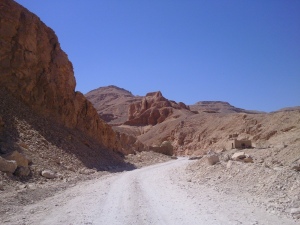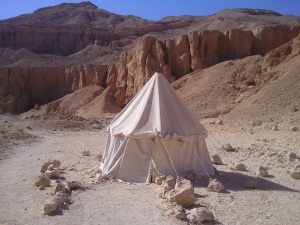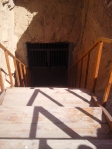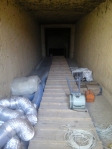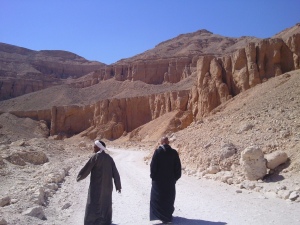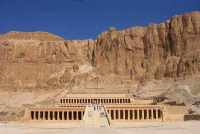Have you already enjoyed a walk to the Tomb of Ay (KV 23), middle of Valley of the Kings?
This is a nice way to feel the heart of the nature, when the wind whistles in your hears and echoes from the cliffs leave you a good omen for the rest of your discoveries.
This is the sacred place chosen by Pharaoh Amenothep III (also called Amenophis III, XVIII dynasty) and Pharaoh Ay (end XVIII dynasty), for them eternal life.
Located in the Valley of the West, or Valley of the Monkeys (named from Ay’s Tomb, decorated with twelve monkeys), the tomb of Amenothep III is along the way. Great Pharaoh of his time, Amenothep III reigned 38 years and let Egypt in peace and prosperity. By a «simple» cavity rock, never we imagine one of the biggest Tomb of Ancient Thebes is just 24 meters deeper!
Discovered in early excavation of the Valley of the Kings looted and emptied of its treasures (KV 22). Later, Howard Carter and Lord Carvarnon made a complete description of the tomb, in 1915.
After the entrance, many rooms lead to burial chamber : Corridor, pillared hall, chambers (it’s unique, two seems to be dedicated for Pharaoh’s wives), ante chambers. Burial chamber is decorated with fine quality, representing Pharaoh and deities (frescoes) and only the top of the big sarcophagus is still inside.
The tomb is closed for restoration, but workers are daily on the site now!
Through these pictures about magic nature and Pharaonic marvels, you can discover the place chosen by Amenothep III, Great Pharaoh of Ancient Egypt, away from other tombs in the Valley of the Kings, as to mark his difference. He was Akhenaten’s father, his successor, entering in Armarnen era, stopped by Pharaoh Ay, who is the only other tomb in this Valley!
Development workers, at the foot of the cliff. A tent for meeting point or sharing a cup of tea, most of work is deep underground.
At the entrance of the tomb, the large pipes used to regenerate the air for workers underground.
External regenerator air connected to pipes inside the tomb. You can see the (small) entrance in the background.
Overview of the (small) entrance to the tomb at the immensity of the cliff.
Be sure to spend a beautiful trip through this balad, feeling nature, sunshine and nice discoveries we’ll be happy to share you!
If you like to spend couple of day in Luxor and the marvels, why not rent a flat to enjoy your visit?
 Along the way, complete your discoveries by visiting Ay’s Tomb,presumed successor of Tutankhamun.
Along the way, complete your discoveries by visiting Ay’s Tomb,presumed successor of Tutankhamun.
(ticket office in the Valley of the Kings 25LE around 2.5GBP; 4USD)
Find more excursions

